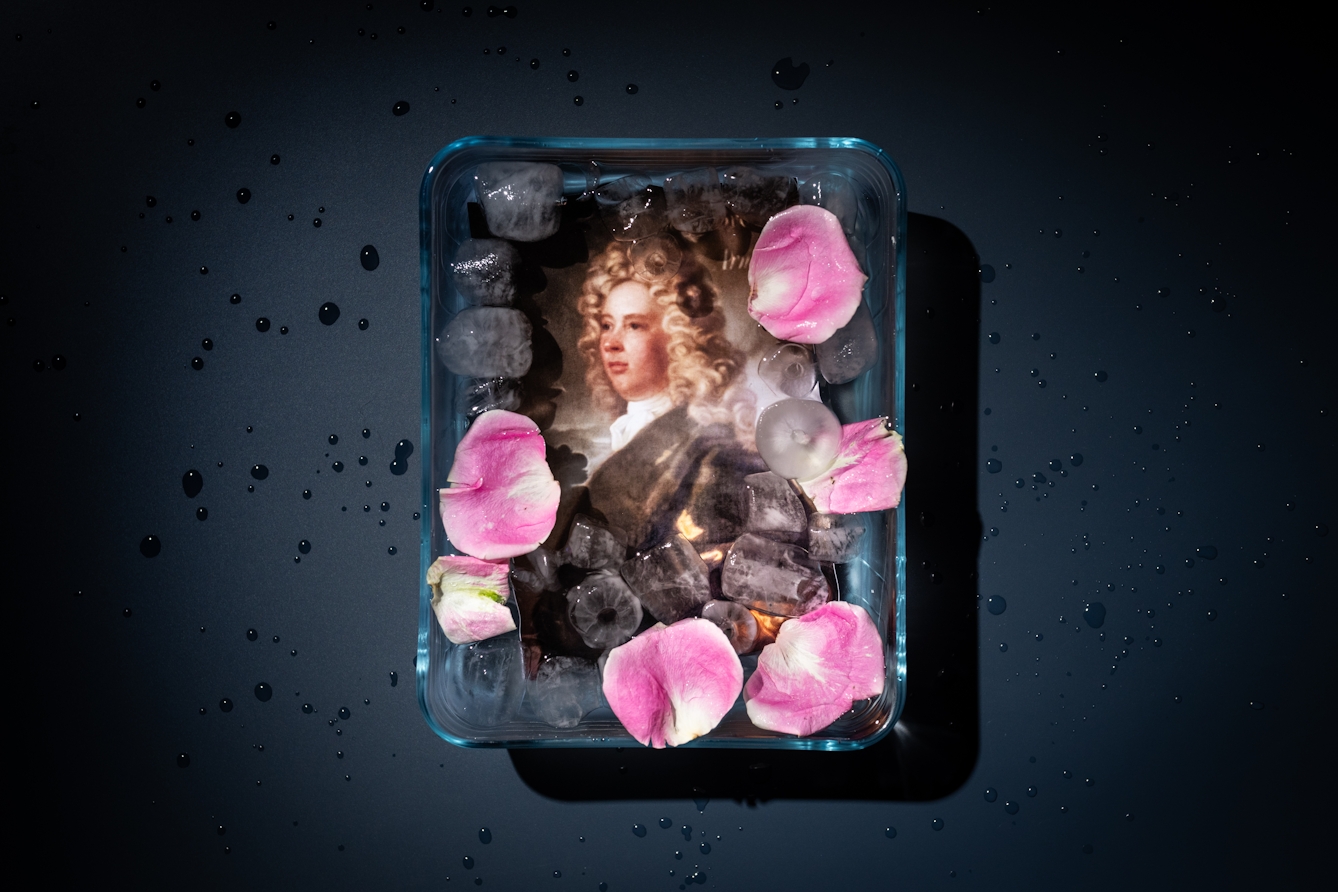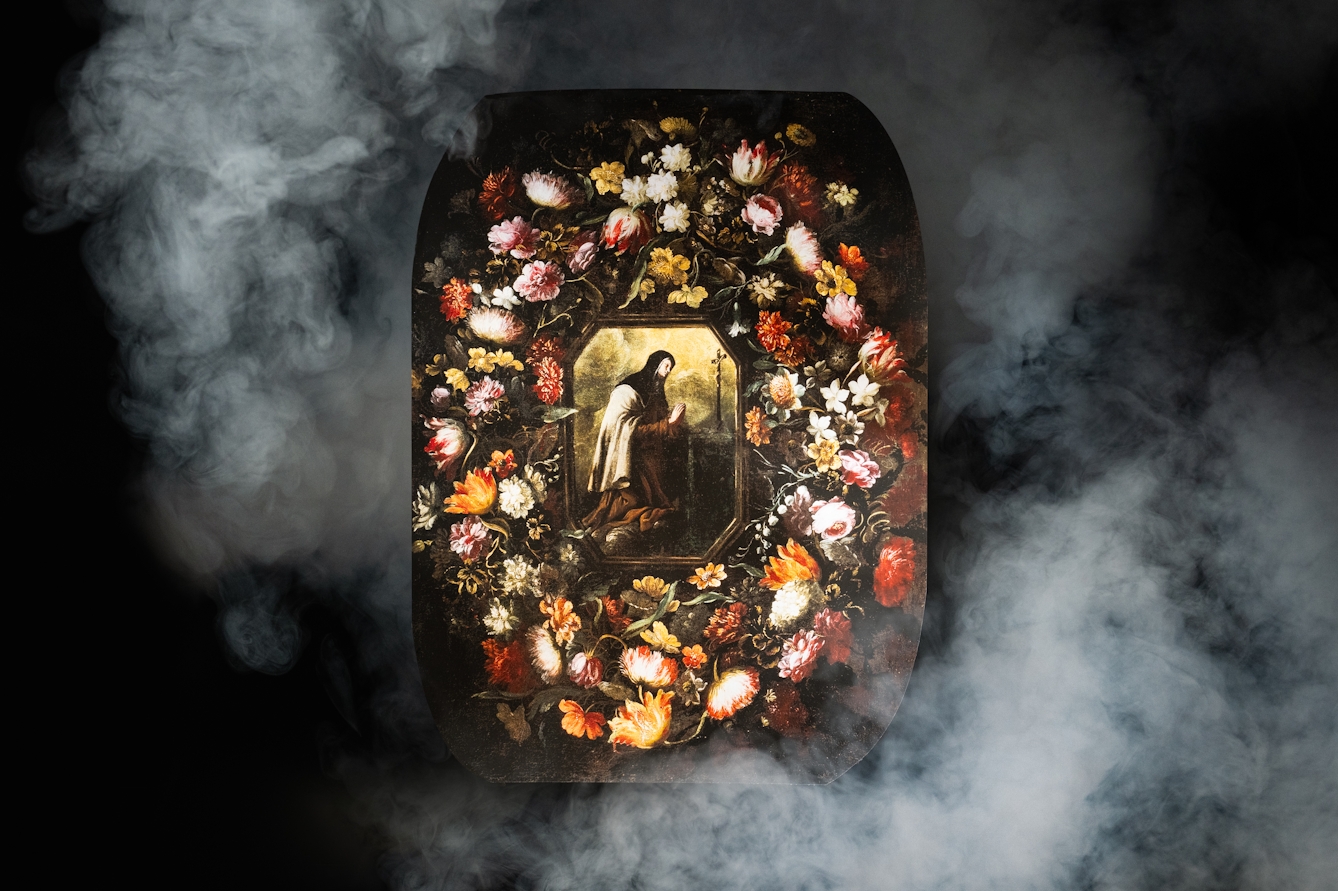Like many people infected with the early variants of Covid-19 in 2020, historian Stephanie Howard-Smith lost her sense of smell for months. This upsetting affliction prompted her to explore the stories of those who’d experienced anosmia – loss of smell – in the past, but she found evidence of their experiences was hard to come by.
On Friday 10 April 2020, I woke up to a shockingly odourless world. I desperately huffed in the things I remembered smelling most clearly: lavender shower gel, the dog’s popcorn-scented paws. But I smelled nothing.
I was one of the six in ten people infected with Covid-19 who experienced anosmia (the medical term for loss of the sense of smell) as a symptom of the virus. Although some smells began to waft back into my world a month later, my sense of smell was not truly restored for over a year.
Like many of Covid-19’s anosmics, soon after I had regained some of my sense of smell, my olfactory system began to register odours I had once found comforting – the scent of cooking onions, the aroma of a hot cup of coffee – as fetid and repulsive. This distortion of smell (parosmia) is another disorder affecting how we perceive and process smell.
I found the experience distressing, even disorienting. I had never realised just how much I relied on my fifth sense. Paola Totaro, in her book with Robert Wainwright, ‘On the Scent’, writes compellingly about how anosmia gave her “the sensation of being untethered, as if one of the things that bound me to the world had been wrenched away”.
A history of lost smell
Of all sensory deficits, anosmia is perhaps the least known. The word ‘anosmia’ to describe the absence of the sense of smell was only coined in the 18th century by the French physician François Boissier de Sauvages de la Croix, although it had been known to medicine by a few other names before that. Even when it had a name, physicians did not agree whether anosmia was a weakness, a symptom or a disease in itself.
Because the term ‘anosmia’ never really gained traction in popular usage, it is difficult to trace the experiences of anosmics in the historical archive. People don’t call themselves anosmic in their own words, but this doesn’t mean that people in the past weren’t affected by a loss of the sense of smell.
Covid-19 brought anosmia – a condition many people had been entirely unaware of – to the world’s attention, but there have almost certainly always been anosmics. The causes of anosmia – physical trauma, viral infection, degenerative conditions and old age – have affected us beyond the timespan of human memory. And it’s not always an acquired condition – some people are born anosmic and simply lack an olfactory bulb (the part of the nervous system that first processes olfactory information).
“In the early 18th century, a man named Samuel Brewer claimed that cold bathing ‘restor’d to him the sense of Smelling, which he never had perfect before in his life’.”
Smell history has become the subject of academic research, yet historians have not really considered what it was like to live without smell in the past. This is partly because there aren’t many first-hand accounts from anosmics, even those highly attuned to sensory experience.
According to his nephew Christopher Wordsworth and his fellow Romantic poet Robert Southey, William Wordsworth lived his whole life without the ability to smell (apart from on one exceptional occasion), but never wrote about his experience at all.
Seeking solutions to smell again
However, we do know about some people’s experiences of anosmia based on accounts of their attempts to cure it. Herbal remedies for anosmia listed in recipe and medicinal books demonstrate that people with smell disorders actively sought relief from the condition.
In the early 18th century, a man named Samuel Brewer claimed that cold bathing “restor’d to him the sense of Smelling, which he never had perfect before in his life […] The first thing that he perceiv’d his Smelling by, was Myrtle, which was to his wonderful Surprize and Amazement!”
Saint Teresa, famous for emitting a beautiful smell known as “the odour of sanctity”, was reported to have miraculously cured two other people of anosmia.
Brewer was evidently delighted in having his smelling restored – and implicitly, presumably frustrated by his previous inability to smell.
Other anosmics might seek Divine intervention. In the 16th century, a Spanish bailiff who had been without a sense of smell for two years following a bad cold was apparently cured by wearing a piece of cloth that had touched the arm of Saint Teresa of Avila, a Spanish nun.
“Upon sniffing a relic of St Teresa, a novice nun who had never had the ability to smell, found that a ‘hot smoke rose through her nostrils’ and she began to smell.”
Saint Teresa, famous for emitting a beautiful smell known as “the odour of sanctity”, was reported to have miraculously cured two other people of anosmia. One of them was a novice nun from Lisbon who had never had the ability to smell, or to appreciate what was “a good or a bad smell”. The young woman was distressed that she could did not smell the beautiful odour that her peers enjoyed.
Upon sniffing a relic of St Teresa, she found that a “hot smoke rose through her nostrils” and she began to smell. The church set about proving the miracle by bringing the young woman different things to sniff and identify as either good or bad smells.
Social inequalities and a diminished fifth sense
In 1700, Bernardino Ramazzini, an Italian physician now known as the father of occupational health, published a treatise on the diseases of workers called ‘De Morbis Artificum Diatriba’. He had noticed that some tradesmen were unaffected by smells others would find repulsive, and noted that a general loss of the sense of smell was one of the various ailments that particularly afflicted painters (along with melancholia and “unhealthy complexions”).
Ramazzini blamed this sensory impairment on the painters’ work environment. “The odours of varnish and oils make their workrooms smell like a latrine,” Ramazzini wrote. “This is very bad for the head and perhaps accounts for the loss of the sense of smell.” Sauvages de la Croix also observed that certain activities – dissecting corpses, emptying latrines, frequenting butcher’s shops and other foul-smelling places – led to anosmia, as people “get so used to and affected by them that they no longer smell others, and lose their sense of smell altogether”.
Three hundred years ago, both Ramazzini and Sauvages de la Croix understood that smell disorders do not affect all of us equally. Air pollution has been linked to hyposmia (that is, a poor sense of smell rather than the loss of the sense) and this is the primary risk factor for smell loss.
The anthropologist Kara C Hoover argues that anosmia needs to be understood as a “sensory inequity” because the wealth of an area is so closely tied to local pollution levels; society’s most vulnerable people (those in poverty, the young, the old and those experiencing difficulties with their mental health) are the most likely to experience the loss of this sense.
Anosmia might even cement existing inequities; there have been studies made connecting olfactory disfunction and pollutant levels to impaired cognition. For this reason, together with the prolonged and potentially life-changing impact of Covid on our olfactory systems, smell loss will linger on as part of the human experience in the 21st century – just like a bad smell.
About the contributors
Stephanie Howard-Smith
Dr Stephanie Howard-Smith is a cultural historian and freelance writer. She was a postdoctoral research assistant at King’s College London, working on the King’s Together-funded project, ‘Anosmia in Culture and History: Smell Losses/Smell Lessons’.
Steven Pocock
Steven is a photographer at Wellcome. His photography takes inspiration from the museum’s rich and varied collections. He enjoys collaborating on creative projects and taking them to imaginative places.




